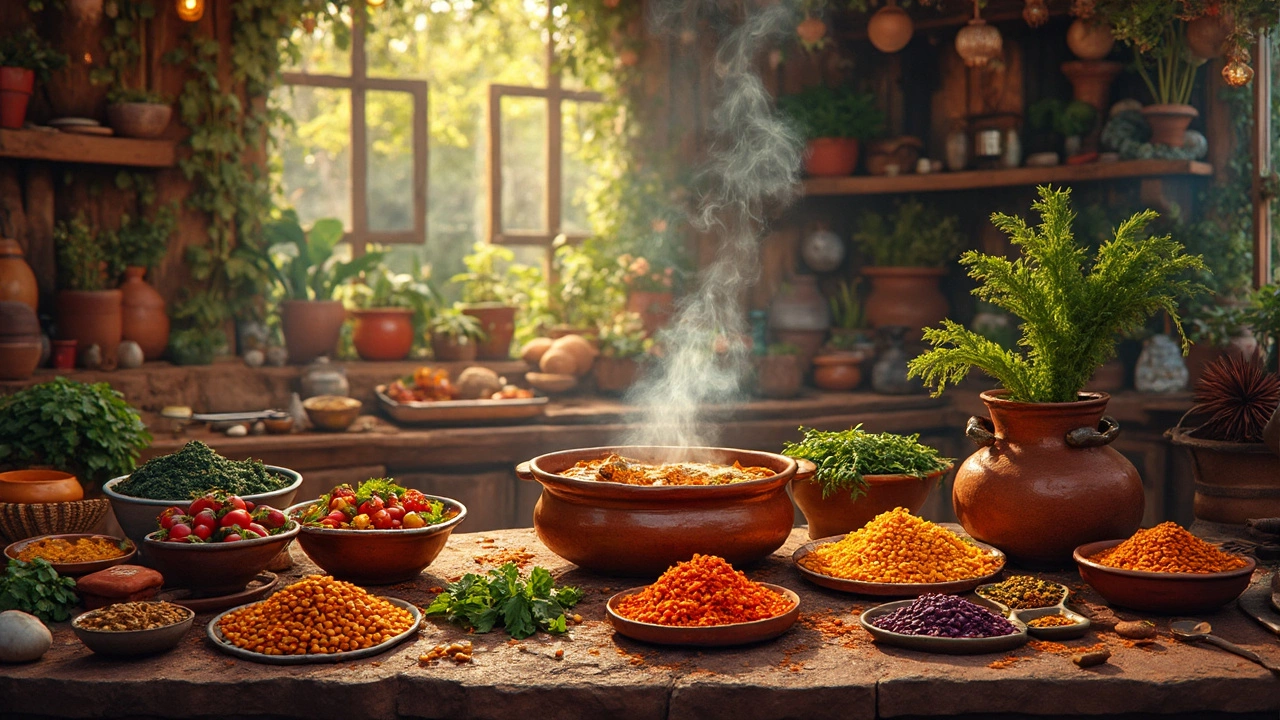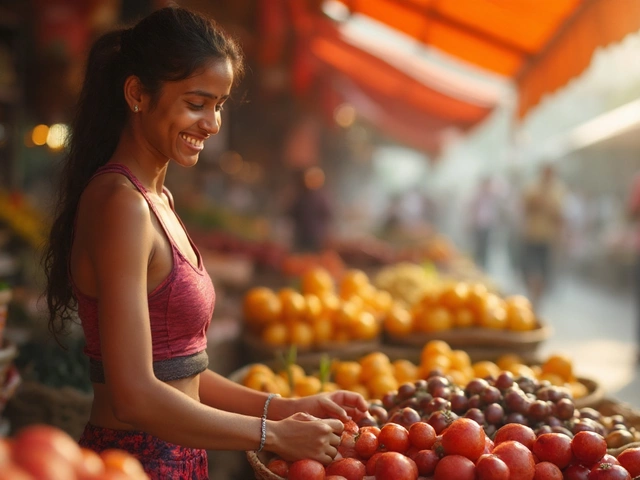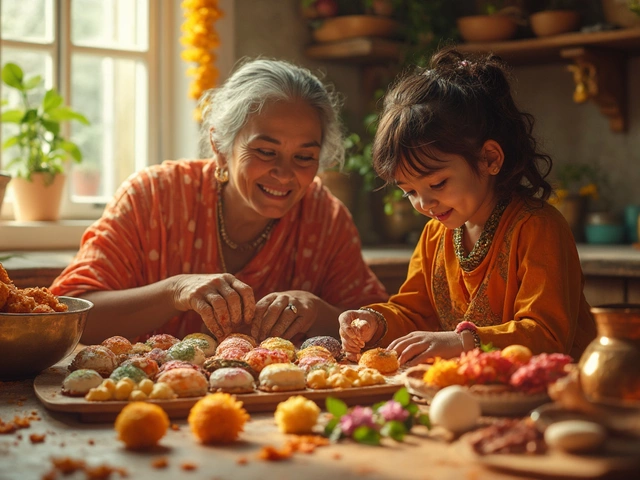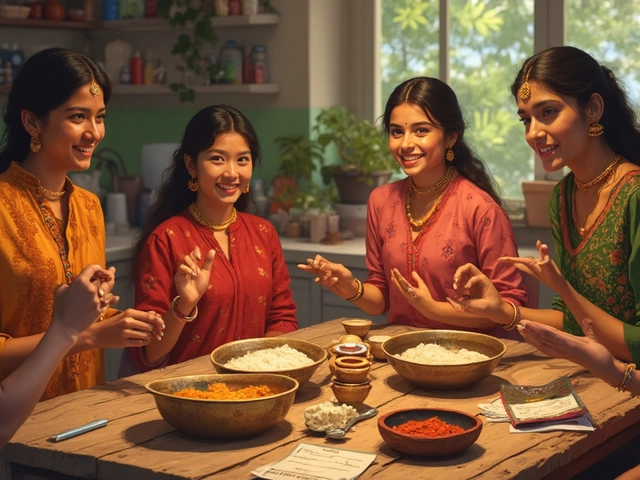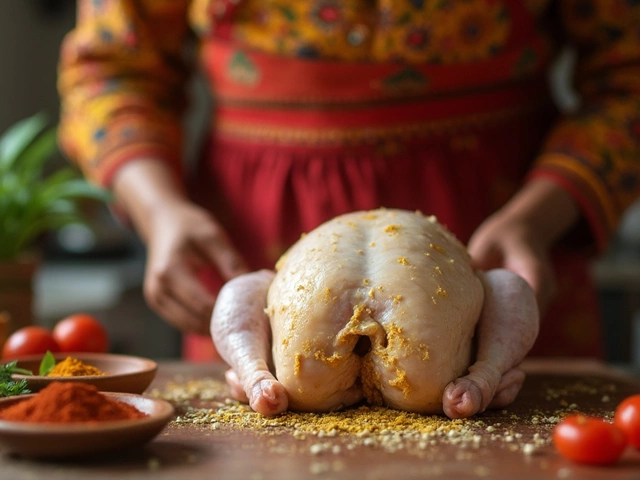When you think of Indian curries, you might picture a dish heavy with cream or yogurt, but guess what? There's a whole world of dairy-free options out there that are just as delicious and deeply satisfying. Whether you're avoiding dairy for dietary reasons or simply want to try something different, Indian cuisine has got you covered.
The trick is in the spices, vegetables, and legumes that form the backbone of these dishes. Think chana masala, a chickpea curry that's rich in flavor and creamy without any cream. Or how about a baingan bharta, with its smoky eggplant goodness? These are just the starting points of what’s possible.
- Introduction to Dairy-Free Curries
- Popular Dairy-Free Options
- Cooking Tips for Dairy-Free Curries
- Spice it Up: Perfecting the Flavor
Introduction to Dairy-Free Curries
Indian cuisine has a special way of bringing flavors to life, especially with its wide array of dairy-free curries. These dishes can be a lifesaver for those who need to steer clear of dairy but don't want to miss out on the bold and exciting flavors of Indian food. The secret lies in using the right mix of spices, herbs, and base ingredients.
Unlike what some might assume, many traditional Indian curries are naturally dairy-free since they rely on ingredients like coconut milk, tomato, and a variety of spices. For instance, dal tadka, a popular lentil-based dish, uses onion, garlic, and spices for flavor and skips the dairy altogether. Coconut milk is a common alternative for those who enjoy creamy textures but want to avoid cream and yogurt.
Let's not forget about the impressive array of spices that define Indian curries. From cumin and coriander to turmeric and garam masala, these spices don't just add flavor; they bring out unique layers in the dish. Their combination makes each curry distinct and allows it to stand out, even without dairy.
Why Go Dairy-Free?
Going dairy-free isn't just for those with lactose intolerance. Many people choose this for health benefits, such as reducing inflammation or improving digestion. A dairy-free diet can fit seamlessly into vegetarian Indian dishes, offering flavors that are no less rich or satisfying.
The Versatility of Dairy-Free Curries
These curries are famously versatile. For example, you can easily swap out ingredients to fit what you have in your pantry. Have some extra vegetables? Toss them in a curry and you've got a delicious, unique meal.Dairy-free Indian curries are proof that incredible taste doesn't always need cream. It's about balance and knowing how to bring out the best in simple, wholesome ingredients.
Popular Dairy-Free Options
Indian cuisine is a treasure trove for those seeking dairy-free meals, and the choices go far beyond what you might expect. Many traditional dishes are naturally free of milk and other dairy components, using coconut milk, spices, and vegetables to create layers of flavor.
1. Chana Masala
One of the most beloved dishes is Chana Masala. Made with chickpeas, this dish is rich in protein and flavor. The chickpeas are cooked with a fragrant mix of onions, tomatoes, garlic, ginger, and spices like cumin and coriander. Not only is it dairy-free, but it’s also packed with nutrients and is a staple in many Indian households.
"Chana Masala is not just a meal; it's an experience of flavors. A simple dish that's powerful in nutrition and taste." – Food Critic Priya Joshi
2. Baingan Bharta
If you're into smoky flavors, Baingan Bharta is your go-to. It's a roasted eggplant dish with a slightly spicy kick. The eggplant is charred to perfection, then peeled and mashed. Cook it with onions, tomatoes, and plenty of spices, and you have a meal that’s both simple and exotic.
3. Aloo Gobi
This humble dish of potatoes and cauliflower is a highlight of vegetarian Indian cuisine. Aloo Gobi combines the earthy taste of potatoes and cauliflower with vibrant spices. It's not overly spicy, making it accessible for everyone, and it's a perfect side or a main dish on a cozy weeknight.
4. Rajma
Looking for a comfort food sensation without the dairy? Rajma, or kidney bean curry, is perfect for you. It has a thick tomato-based gravy with grounding and warming spices like garam masala. Top it off with some fresh cilantro, and you're all set.
For those interested in experimenting, here’s a quick look at the nutritional value of some of these dishes:
| Dish | Calories | Protein (g) |
|---|---|---|
| Chana Masala | 270 | 12 |
| Baingan Bharta | 150 | 4 |
| Aloo Gobi | 190 | 5 |
| Rajma | 320 | 15 |
These dishes not only provide you with dairy-free alternatives but also bring a burst of nutrition and flavor to your dining table. So, whether you’re a committed vegan or just exploring, there's a curry for everyone!
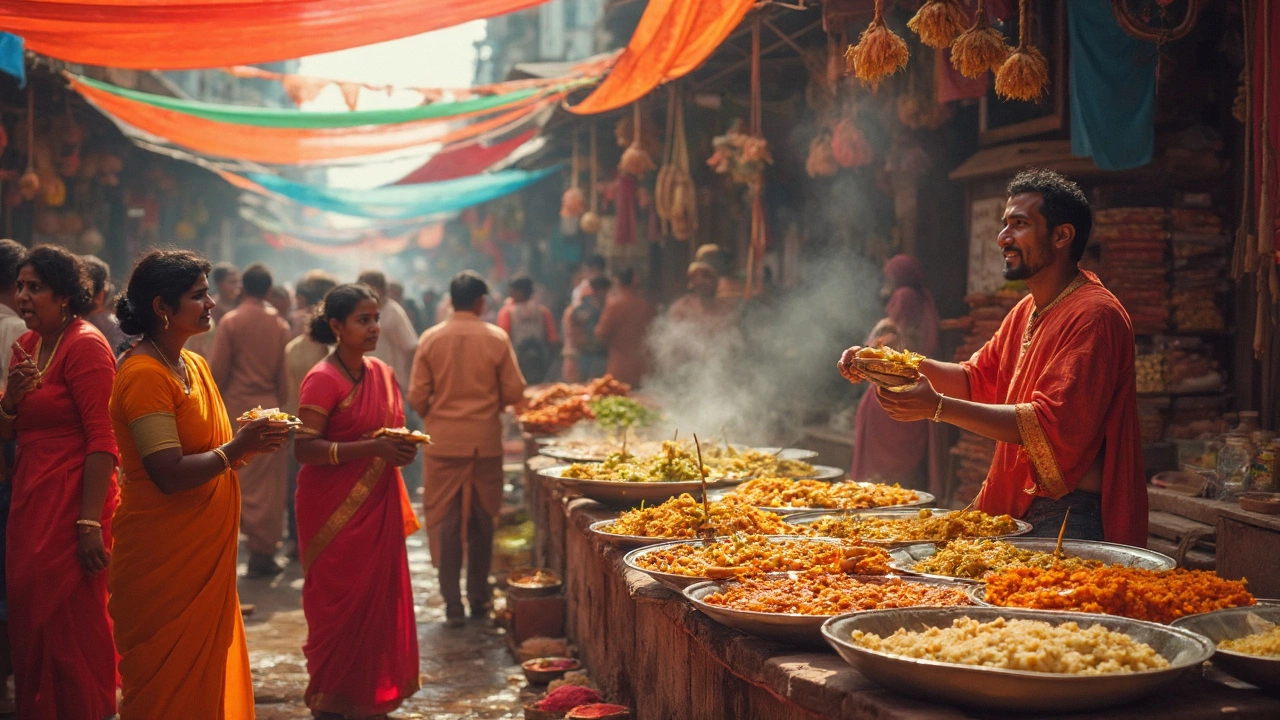
Cooking Tips for Dairy-Free Curries
Cooking a fantastic dairy-free Indian curry doesn't have to be complicated. The key lies in clever substitutions and understanding the role of different ingredients. These tips will help you maximize flavor without the need for dairy.
Use Coconut Milk Strategically
Coconut milk is a lifesaver in dairy-free cooking. It offers a creaminess similar to heavy cream without the dairy, making it perfect for thickening curries. You can use it sparingly to avoid over-sweetening the dish while still getting that rich texture.
Grind Your Spices
Nothing beats the flavor of freshly ground spices. Invest in a mortar and pestle or a small spice grinder to crush spices like cumin, coriander, and mustard seeds right before adding them to your curry. As the famous chef Madhur Jaffrey puts it,
"The joy of cooking a curry from scratch with freshly ground spices is that you can control the taste, creating layers of flavors, like composing a symphony."
Experiment with Plant-Based Yogurts
Many traditional curries use yogurt for tanginess. Swap this out for plant-based options like almond or soy yogurt. They contribute a similar tartness without diverging from a dairy-free diet.
Keep an Eye on Cooking Oil
Using the right oil can change everything. Indians often use mustard oil, which adds a deep, nutty flavor. Make sure to heat it until it's smoking before using it to preserve authenticity in your curry.
Ingredient Substitution Table
| Dairy Ingredient | Dairy-Free Substitute |
|---|---|
| Heavy Cream | Coconut Milk or Cream |
| Yogurt | Almond or Soy Yogurt |
| Butter | Vegetable Oil or Ghee |
With these tips and tricks, you'll find that cooking dairy-free Indian curries not only broadens your culinary horizon but also respects authenticity while embracing dietary needs.
Spice it Up: Perfecting the Flavor
When it comes to Indian curry, the beauty lies in its spices. These little wonders transform simple ingredients into something extraordinary. Mastering the use of spices can easily elevate your plate of dairy-free goodness.
Essential Indian Spices
First things first, you need a well-stocked spice rack. Here are the must-haves to get started with:
- Cumin: Warm and earthy, cumin is the base note for many curries.
- Coriander: Slightly citrusy and sweet, it complements other spices wonderfully.
- Turmeric: This vibrant yellow spice is known for its earthy taste and health benefits.
- Garam Masala: A blend of spices, garam masala is usually added at the end to deepen the flavor profile.
- Red Chili Powder: Adds heat – use according to your tolerance.
These spices aren’t used in isolation. It’s about finding the right balance that suits your taste.
Building Layers of Flavor
Cooking a great dairy-free Indian curry is like telling a story with food. Start by heating oil in a pan and tempering whole spices like cumin seeds until they sputter. This initial step unlocks the oil-soluble flavors. Next, add aromatics such as onions, ginger, and garlic. They're the foundation of many recipes for that rich, savory base.
Once these aromatics turn golden brown, it’s time to introduce your choice of ground spices. Add them with tomatoes or coconut milk for richness without cream. Stir and simmer until everything melds together into a flavorful sauce.
Adjusting to Taste
Remember, spices shouldn’t overpower but should harmonize with the other elements. Tasting as you go is crucial. Need more heat? A pinch more of red chili. Too salty? Add a touch of sugar or a squeeze of lemon for balance.
Did you know that a typical one-pot curry can easily contain around ten different spices? The impressive part is that they all work together to create a symphony of flavors that can be customized to be just as spicy or mild as you prefer.
Fresh Herbs and Finishers
Top it all off with fresh cilantro or mint for brightness. A sprinkle of freshly roasted and ground cumin can also lend that finishing touch, enhancing the overall aroma.
So, the next time you're cooking a vegetarian Indian dish, remember: spices are your best friends. With a little practice, you'll be an expert at crafting delicious dairy-free curries that keep everyone coming back for more!
- Poplular Tags
- Indian curry
- dairy-free
- vegetarian
- Indian dishes





